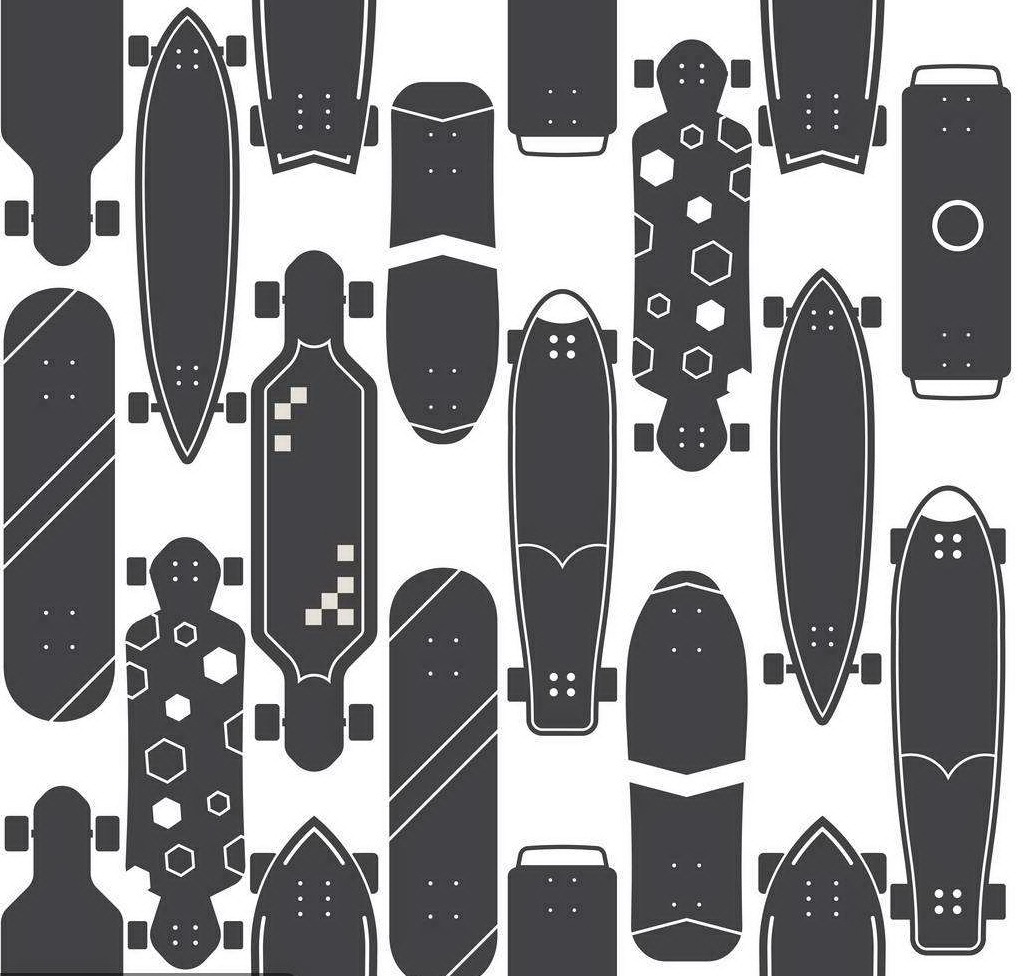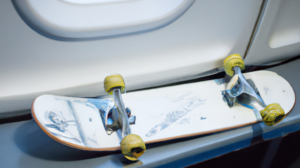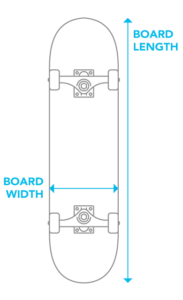
L8 SK8 is Skate Camp’s drop-in open skate program and serves as an extended care option for Skateboard Camp participants. Participants get extra skateboard practice time during extended care hours with an instructor. Private skateboard lessons are also available for skaters who want to tune their skills and learn one-on-one with our highly qualified teaching staff. Lessons are for 50 minutes. Pre-enrollment is required for all lessons.
Skateboards consist of three parts:
The deck (the actual board).
The truck (a component usually made of metal that holds the wheels to the deck).
The wheels.
The average skateboard deck is about 32 in (81.3 cm) extended, 8 in (20.3 cm) wide, and is a little less than 0.5 in (1.3 cm) thick. The deck has a defined nose and tail with a concave in the middle. Skateboard wheels are usually polyurethane and range in width from about 1.3-1.5 in (3.3-3.8 cm). While nearly all skateboards have similar shapes and characteristics, their dimensions vary slightly based on use. There are skateboards built for speed, slalom, and freestyle.
Bicycle riders on public roads have the same rights and responsibilities as motorists and are subject to the same rules and regulations. On the CSULB campus, bicycle use is also allowed on designated sidewalks and pathways. Bicycles must always yield to pedestrians and are prohibited in the designated pedestrian-only zones.
“We wanted to showcase our skateboard’s performance and prove that our rolling chassis is a self-contained unit with everything needed to drive built inside,” said Head of JieSen Sports. “We have revolutionized the platform design concept with a chassis that can be easily married with different cabins, with a little adjustment, enabling us to get new vehicles on the road faster and cheaper. Keeping the most critical and expensive part of the vehicle uniform in all our models allows us to rapidly and cost-effectively bring a full line-up of EVs to market.”
Skateboarding Is a Versatile Action Sports Skateboarding is an action sport in which various tricks are performed using a skateboard. Even though the sport focuses heavily on different tricks, jumps, and grinds, skateboarding has become a popular way of getting around urban areas. Skateboarding is known for three main styles: park, vert, and street skateboarding. Park skateboarding is performed mainly in skate parks with various special-made obstacles. Vert skateboarding involves vertical Riding on ramps or vert bowls, requiring more speed than the other styles. Street skateboarding uses everyday urban obstacles such as rails and stairs to perform tricks.
Why Skateboarding Is Good for You Riding, a skateboard has many benefits. It improves your body coordination since you must constantly modify your body positions to land tricks. It also positively impacts your balance, and it’s also worth mentioning that it is a fun full-body workout at its best. Skateboarding is also a great way to meet new people with similar interests. It is easy to be social at skate parks because people tend to greet each other and start conversations about their favorite tricks and skateboard brands. The sport also boosts your confidence since nothing feels better than nailing a trick right for the first time. The History of Skateboarding The history of skateboarding as we know it today began in the 1940s on the West Coast of the US. Around that time, surfers started to mount wheels on plates, planks, and other things they could use as decks when they could not surf. Originally, skateboarding was called “sidewalk surfing” due to the heavy influence of surfing. Over the following decades, the sport continued to develop. In the 1960s, the first shops started to sell skateboards, and in the 70s ceramic and metal wheels were replaced with polyurethane.







